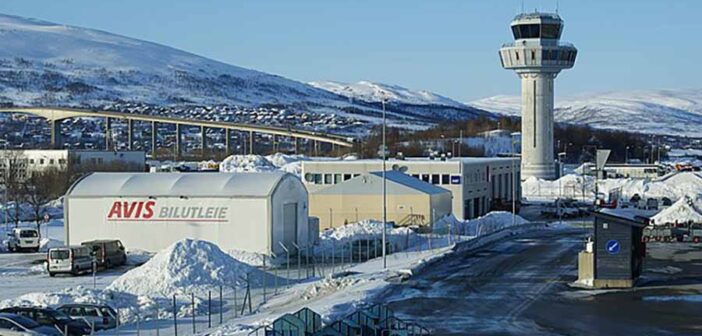Tromsø Airport, located just 5 kilometres northwest of Tromsø’s city centre on the island of Tromsøya, offers a compact and efficient experience for travellers exploring Norway’s Arctic region or connecting to European destinations. Access to the airport is straightforward, with multiple transport options. The Flybussen Airport Express coach departs every 15–30 minutes, reaching the city centre, university, and key hotels in 10–15 minutes for £12 one way or £20 return, with tickets valid for 30 days and purchasable online or on board. Local buses 24, 40, and 42, operated by Svipper, connect to the city for £4.15, with a first departure around 5:00 am on weekdays and a timetable available via the Svipper app.
Taxis, available outside the terminal, cost £15–£25 to the city, with higher fares on Sundays or late nights. Car rentals from Avis, Hertz, and Europcar are located in the arrivals hall, and passengers with reduced mobility can access wheelchair-friendly buses and assistance, bookable 48 hours in advance.
The airport features two terminals: Terminal A for domestic flights and Terminal B for international routes, with a temporary Terminal C handling some departures during ongoing renovations until late 2025. The single-level layout is easy to navigate, with check-in counters, self-service kiosks, and baggage claim on the ground floor of the main terminal.
Security and gates are on the first floor, and a shuttle bus connects to Terminal C, located 200 metres away.
Security queues can reach 1.5 hours during peak winter months, particularly for early morning flights, so arriving 2 hours before domestic flights and 3 hours before international ones is recommended. Bus-boarding to aircraft is common, requiring a short outdoor walk.
On-time performance is generally dependable, with real-time updates available via Flightradar24 or the airport’s website. Delays may occur due to winter weather, such as snow or fog, or high passenger volumes in January–March. The airport serves 45 destinations across 19 airlines, including SAS, Norwegian, and Widerّe, with frequent flights to Oslo, Bergen, and seasonal routes to London and Paris. Minimum connection times are 30–45 minutes, though transfers to Terminal C or non-Schengen flights may require extra time for shuttle buses or passport control.
Dining and retail options are limited but functional. The Nordlys Bar and a self-service restaurant in Terminal A serve Norwegian dishes and snacks from 5:00 am to 8:00 pm, while Terminal C offers a smaller café. A duty-free shop, open for all flights, stocks perfumes and local products, and a Point Kiosk in arrivals sells essentials. No 24-hour dining is available, so late-night travellers should bring snacks. Prices can be steep, and the absence of a tax-free refund desk may inconvenience some.
Facilities cater to essential needs. Free Wi-Fi is available throughout, though connectivity can falter during busy periods. Charging points are limited, and a portable charger is advisable. Baby-changing rooms are located near restrooms, but no children’s play area exists. The Nordlys Lounge in Terminal A, open 5:00 am to 8:00 pm, provides seating and refreshments for £25 for economy passengers. Baggage wrapping and lost property services are in the main terminal, and over 1,000 parking spaces start at £4 per day, with free parking for passengers with reduced mobility. The airport operates 24/7, but nearby hotels like Scandic Ishavshotel, 2 kilometres away, suit layovers. Accessibility features include ramps, lifts, and wheelchair assistance.




